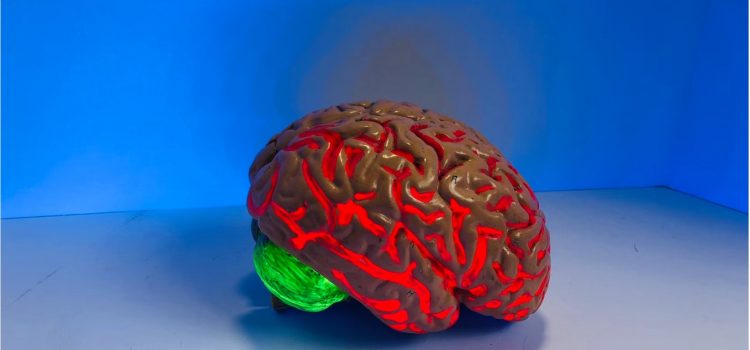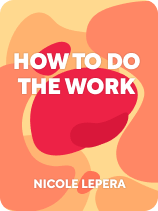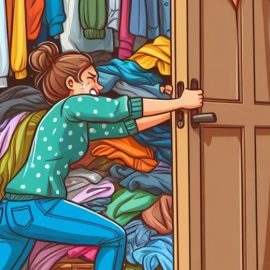

This article is an excerpt from the Shortform book guide to "How to Do the Work" by Nicole LePera. Shortform has the world's best summaries and analyses of books you should be reading.
Like this article? Sign up for a free trial here.
What is the role of your subconscious brain? What’s the connection to your childhood? Does it help to keep you safe?
In How to Do the Work, holistic psychologist and bestselling author Nicole LePera discusses the role of your subconscious brain and its connection to behaviors you learned in childhood. According to her, while it’s meant to keep you safe, your subconscious can also lead to self-destructive behaviors.
Read on for LePera’s explanation of your subconscious brain and how it can both protect and harm you.
Subconscious Brain: Is It Helpful or Harmful?
LePera argues that your reliance on defensive beliefs and behaviors to avoid feeling pain doesn’t end in childhood but, rather, follows you into adulthood. She clarifies why your childhood conditioning continues to influence you by exploring three aspects of your subconscious brain:
- Your subconscious brain relies on default patterns.
- Your subconscious brain’s primary role is to keep you safe.
- Your subconscious brain protects you by creating discomfort.
Default Patterns From Your Subconscious
According to LePera, your subconscious regulates your physiological functions and manages how you perceive, interpret, and respond to all your experiences.
(Shortform note: There is still much to be learned about how the subconscious brain works, but neuroscientists confirm that 95% of your brain activity takes place beyond your conscious awareness, in your subconscious brain. Further, your subconscious brain is always alert—because it controls your physiological functions, it stays awake even while you’re asleep.)
It’s able to carry out all these tasks autonomously because it creates default patterns based on what you think, feel, and do most often. These patterns allow you to engage in your routines without having to relearn every single thing you do every time you do it.
Once your subconscious brain creates a default pattern, it stores the pattern in your brain, categorizes it as a part of your internal makeup, and relies upon it as an instruction manual. (Think of these patterns as analogous to the internal programming that controls how your smartphone functions.) LePera argues that these default patterns compel you to function on autopilot, engaging in thoughts, feelings, and behaviors without consciously thinking about them.
The following examples illustrate how these default patterns show up in your life:
Example #1: Each time you brush your teeth, you automatically pick up your toothbrush with one hand and apply toothpaste with the other. This is because your subconscious brain paid attention to your actions and created a default routine for brushing your teeth. Without this default routine, you would have to relearn how to brush your teeth every single time.
Example #2: Each time you see a cookie, you automatically think about eating it and feel the urge to put it in your mouth. This is because your subconscious brain paid attention to how you responded to seeing cookies. It then created a default pattern that results in you automatically wanting a cookie each time you see one. Without this pattern, you would have to consciously decide how to feel about cookies each time you saw them.
(Shortform note: James Clear (Atomic Habits) validates LePera’s claim that you’re compelled to act on autopilot. According to him, your default patterns drive more than 50% of your daily behaviors.)
According to LePera, the default patterns your subconscious brain relies on were created during your childhood. This means that your conditioning, as well as your defensive beliefs and behaviors, contribute to many of your automatic patterns.
| Why Your Subconscious Brain Relies on Default Patterns Neuroscientists offer additional insights on why your subconscious brain relies on default patterns: It prevents information overload and helps you make quick decisions. Your subconscious brain is an unlimited memory bank that permanently stores your every life experience, even those you’re not consciously aware of: Everything you experience is imprinted in this area of your brain. This memory bank processes four million bits (a measure of data transfer) per second and includes both significant and insignificant experiences, such as how you felt the first time you fell in love and the many hours you’ve spent watching Netflix. Your conscious mind relies on this memory bank to access the information you need to function on a moment-by-moment basis. Since this memory bank is so full of information, your subconscious brain needs to create shortcuts (default patterns) that it can use to quickly sift through everything it has stored, retrieve the information you need, and act accordingly. For example, when you meet your best friend, you instinctively give her a hug. The process that led to this hug played out as follows: You saw your best friend. Your subconscious brain sifted through its memory bank, retrieved memories of your previous interactions, decided on an appropriate response, and compelled you to give her a hug. What felt like an instinctual response to you was actually a pre-programmed response based on how you habitually think and behave. |

———End of Preview———
Like what you just read? Read the rest of the world's best book summary and analysis of Nicole LePera's "How to Do the Work" at Shortform.
Here's what you'll find in our full How to Do the Work summary:
- How childhood conditioning impacts your mental and physical health
- How to develop positive patterns that improve your well-being
- Tools to feel happier, healthier, and more in control of your life






